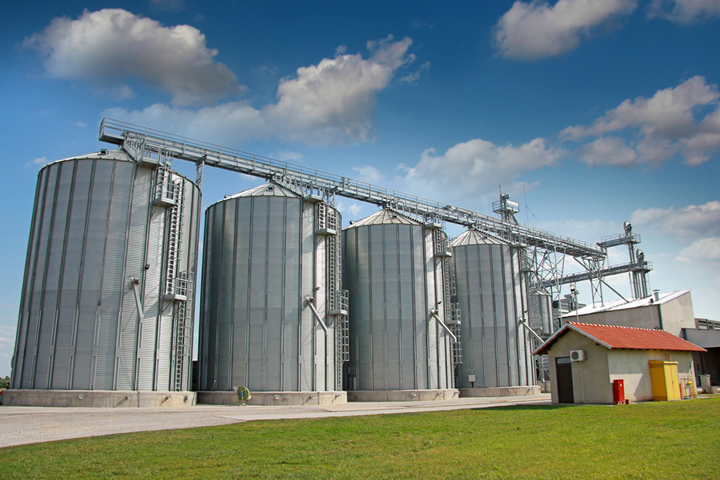Propane’s Evolving Role in a Lower-Carbon Energy System

While clean energy conversations often centre around solar, wind, and electric vehicles, propane remains an active component of the global energy mix. For over a century, it has reliably powered homes, farms, and industrial operations, particularly in off-grid and rural locations. Today, propane’s value lies not just in its legacy use, but in its potential to support a more diverse, resilient, and lower-emission energy infrastructure.
With comparatively lower carbon emissions than many traditional fuels and a growing renewable supply chain, propane is positioned to play a supporting role in the transition to cleaner energy, especially in areas where full electrification remains unviable in the short to medium term.
Understanding Propane: Structure and Efficiency
Propane is a hydrocarbon with the chemical formula C₃H₈, comprising three carbon atoms and eight hydrogen atoms. This relatively simple structure allows for a clean, efficient burn. When combusted properly, propane primarily emits water vapour and carbon dioxide, with minimal particulate matter or toxic byproducts.
Its high energy density, approximately 91,500 BTUs per gallon, means it delivers more usable heat than many other fuels, including natural gas, which provides less than half the energy output per gallon equivalent.
Production: A By-Product with Strategic Value
Unlike oil or natural gas, propane is not extracted as a primary resource. It is a by-product of natural gas processing and crude oil refining. During natural gas extraction, other gases such as ethane, butane, and propane are present in the raw mix. These are separated through temperature and pressure adjustments at processing plants. Similarly, propane is isolated during the distillation of crude oil into fuels like petrol and diesel.
Once extracted, propane is liquified under pressure, enabling cost-effective storage and transport. This compression makes it particularly valuable in rural and remote areas where pipeline infrastructure is limited or absent.
“Most people don’t realise propane is like a bonus fuel,” said Brad Brooks, Supply & Logistics Director at DCC Propane. “It’s not drilled for directly, but we get millions of gallons of it just by processing other fuels.”
Current Uses: Reliable, High-Demand Applications
Propane remains in widespread use due to its energy efficiency, portability, and versatility. It is employed across residential, agricultural, and commercial settings:
- Residential: Heating, water heating, cooking, and backup power generation.
- Agricultural: Drying grain, powering irrigation engines, and heating greenhouses.
- Commercial/Industrial: Fuel for forklifts, manufacturing processes, food service, and temporary heating on construction sites.
Its off-grid capability is particularly critical during power outages or in extreme weather conditions. Unlike electric heat pumps, which lose efficiency in sub-zero temperatures, propane systems maintain performance.
“There’s something to be said for a fuel you can store on-site and depend on,” added Reena Mistry. “Especially in the face of adverse weather conditions.”
Technology and Innovation in the Propane Sector
The propane industry is adopting new technologies aimed at improving efficiency and sustainability:
- Smart tank monitoring: Enables remote usage tracking and automated refill scheduling, reducing waste and improving logistics.
- High-efficiency appliances: Tankless water heaters and dual-fuel HVAC systems lower consumption and operating costs.
- Modern propane engines: Used in transport fleets, these engines are achieving compliance with low-emission standards and improving air quality in urban environments.
These advancements underscore propane’s capacity to align with evolving environmental and performance expectations.
Addressing the Environmental Impact
While propane is a fossil fuel, its combustion profile is significantly cleaner than coal, heating oil, or diesel. It emits fewer greenhouse gases per unit of energy, produces negligible particulate matter, and contains no mercury or lead.
For consumers or industries that cannot fully electrify in the near term, propane presents a practical way to reduce carbon intensity without requiring wholesale infrastructure replacement.
The Emergence of Renewable Propane
One of the most significant developments in the sector is the commercial availability of renewable propane. Produced from organic feedstocks, including used cooking oil, animal fats, and plant-based oils, it is chemically identical to conventional propane but can offer up to 80% reductions in lifecycle carbon emissions.
Because it functions identically to traditional propane, no changes to appliances or distribution systems are required. This positions renewable propane as a realistic decarbonisation tool in applications where electrification is costly, complex, or technically constrained.
“We’re seeing growing interest in renewable propane as a way to reduce emissions without giving up reliability,” said Mistry. “It complements other renewables, especially in rural settings.”
A Supporting Role in Energy Transition
Propane is not intended to compete with solar or wind technologies. Instead, it acts as a complementary source, bridging energy access gaps, supporting backup systems, and contributing to energy security where other technologies fall short.
Its ability to store energy on-site, power emergency systems, and operate independently from the electric grid makes it strategically valuable in both residential and critical infrastructure settings.
As governments shift policy towards energy diversification and resilience, propane’s existing infrastructure and low entry barrier offer a practical solution that supports broader sustainability goals without delaying progress.
“People talk about an ‘all-of-the-above’ energy strategy,” Brooks added. “Propane fits that perfectly. It’s here now, it works, and it complements where we’re heading.”
Propane’s Continued Relevance
Propane may not generate headlines like emerging green technologies, but its continued evolution, through renewable production, improved appliances, and smart distribution, makes it a relevant, scalable, and lower-emission solution in the wider energy transition.
For consumers, communities, and sectors facing electrification constraints, propane offers a proven and increasingly clean alternative that delivers energy where and when it’s needed.
Sources
- https://afdc.energy.gov/fuels/propane-production
- https://www.eia.gov/energyexplained/units-and-calculators/british-thermal-units
- https://www.act-news.com/news/propane-autogas-engine-technology-continues-to-progress
- https://fosterfuels.com/blog/propane-vs-other-fuel-types
- https://www.liquidgasuk.org/uploads/DOC5DA5B52BBA49F.pdf
- https://propane.com/2024/09/06/in-case-of-emergency-propane-provides-resilient-power-for-critical-care-facilities
Comments (0)
This post does not have any comments. Be the first to leave a comment below.
Featured Product

